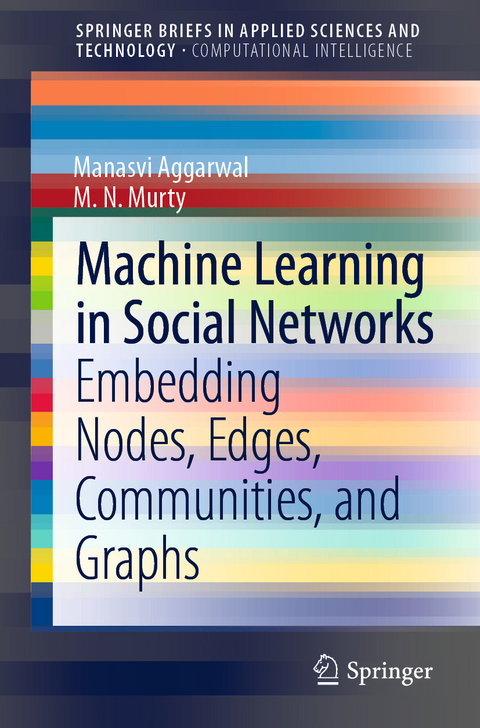
Machine Learning in Social Networks
Embedding Nodes, Edges, Communities, and Graphs
Seiten
2020
|
1st ed. 2021
Springer Verlag, Singapore
978-981-334-021-3 (ISBN)
Springer Verlag, Singapore
978-981-334-021-3 (ISBN)
This book deals with network representation learning. It deals with embedding nodes, edges, subgraphs and graphs. There is a growing interest in understanding complex systems in different domains including health, education, agriculture and transportation. Such complex systems are analyzed by modeling, using networks that are aptly called complex networks. Networks are becoming ubiquitous as they can represent many real-world relational data, for instance, information networks, molecular structures, telecommunication networks and protein–protein interaction networks. Analysis of these networks provides advantages in many fields such as recommendation (recommending friends in a social network), biological field (deducing connections between proteins for treating new diseases) and community detection (grouping users of a social network according to their interests) by leveraging the latent information of networks. An active and important area ofcurrent interest is to come out with algorithms that learn features by embedding nodes or (sub)graphs into a vector space. These tasks come under the broad umbrella of representation learning. A representation learning model learns a mapping function that transforms the graphs' structure information to a low-/high-dimension vector space maintaining all the relevant properties.
M.N. Murty is currently a Professor in the Department of Computer Science and Automation at the Indian Institute of Science, Bangalore. His research interests are in the area of pattern recognition, data mining, and social network analysis. Ms. Manasvi Aggarwal is currently pursuing her M.S. at the Indian Institute of Science, Bangalore. Her research interest is in the areas of social networks and machine learning
Introduction.- Representations of Networks.- Deep Learning.- Node Representations.- Embedding Graphs .- Conclusions.
| Erscheinungsdatum | 15.01.2021 |
|---|---|
| Reihe/Serie | SpringerBriefs in Applied Sciences and Technology | SpringerBriefs in Computational Intelligence |
| Zusatzinfo | 18 Illustrations, color; 11 Illustrations, black and white; XI, 112 p. 29 illus., 18 illus. in color. |
| Verlagsort | Singapore |
| Sprache | englisch |
| Maße | 155 x 235 mm |
| Themenwelt | Informatik ► Theorie / Studium ► Künstliche Intelligenz / Robotik |
| Mathematik / Informatik ► Mathematik ► Angewandte Mathematik | |
| Technik | |
| ISBN-10 | 981-334-021-5 / 9813340215 |
| ISBN-13 | 978-981-334-021-3 / 9789813340213 |
| Zustand | Neuware |
| Haben Sie eine Frage zum Produkt? |
Mehr entdecken
aus dem Bereich
aus dem Bereich
Buch | Softcover (2024)
REDLINE (Verlag)
20,00 €
Eine kurze Geschichte der Informationsnetzwerke von der Steinzeit bis …
Buch | Hardcover (2024)
Penguin (Verlag)
28,00 €


